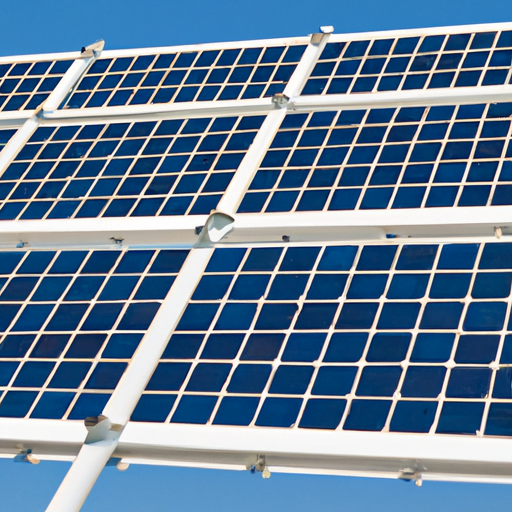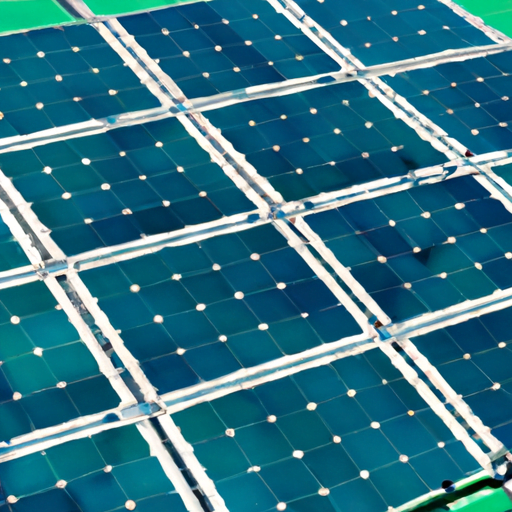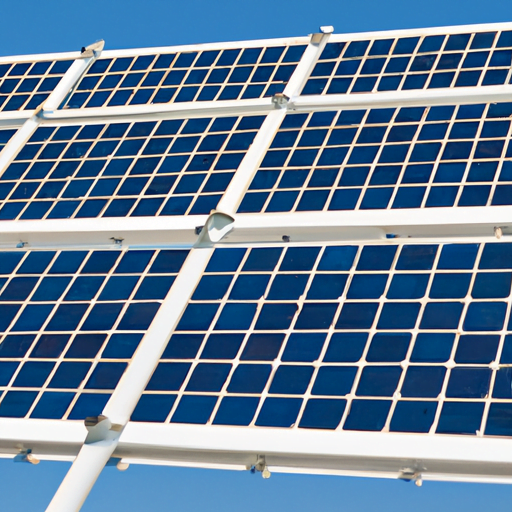Have you ever considered living off the grid? You know, completely self-sufficient and independent from the public electricity grid? It’s a fascinating concept, isn’t it? And one that many people are increasingly drawn to. But here’s a question for you: can an off-grid system actually work without a battery?
You might be thinking, “Wait, how can an off-grid system function without a battery?” After all, isn’t the battery the main component that stores the energy generated by solar panels or wind turbines? Well, you’re not wrong. Traditionally, batteries have played a crucial role in off-grid systems by storing excess energy for use during times of low generation. However, advancements in technology have introduced alternative solutions that eliminate the need for batteries altogether.
In this article, we’ll dive deeper into the world of battery-less off-grid systems. We’ll explore various innovative solutions that are gaining traction, such as direct grid-tie systems, solar thermal systems, and kinetic energy systems. By the end, you’ll have a solid understanding of how these battery-less systems operate and whether they might be a viable option for your off-grid living aspirations. So, let’s embark on this exciting journey together and discover the world of battery-less off-grid solutions!

Understanding Off-Grid Systems
What are off-grid systems?
Off-grid systems are self-sufficient energy systems that operate independently from the traditional power grid. These systems are designed to generate and store their own electricity, making them ideal for remote locations or for individuals seeking to reduce their reliance on the grid. Off-grid systems typically consist of alternative energy sources, such as solar, wind, or hydro power, and energy storage solutions, such as batteries.
Benefits of off-grid systems
Off-grid living offers several advantages, including energy independence, environmental sustainability, and cost savings. By generating their own electricity, off-grid homeowners are not subject to power outages or fluctuations in energy prices. Additionally, off-grid systems produce clean energy, reducing the reliance on fossil fuels and minimizing the carbon footprint. Finally, while the initial investment of setting up an off-grid system may be higher, the long-term savings on utility bills can be significant.
Challenges of off-grid living
While off-grid systems offer numerous benefits, they also present unique challenges. One of the main challenges is the limited availability of energy during periods of low or no renewable energy generation. This is where energy storage solutions, such as batteries, play a crucial role in providing a consistent power supply. Additionally, off-grid systems require careful planning and design to ensure that they meet the energy needs of the household. Factors such as geographic location, energy requirements, and budget must be taken into consideration when designing an off-grid system.
Battery-less Off-Grid Solutions
Introduction to battery-less off-grid systems
Battery-less off-grid systems, as the name suggests, operate without the use of batteries for energy storage. Instead, these systems rely on alternative energy sources, such as solar, wind, or hydro power, to directly power the load or to feed excess energy back to the grid.
How do battery-less systems work?
Battery-less off-grid systems utilize the concept of real-time energy consumption. When the energy production from the renewable sources exceeds the demand, the excess energy is either used to power the load directly or is fed back to the grid. Conversely, during periods of low energy generation, the system draws power from the grid to meet the household’s energy needs. This approach allows for a continuous flow of electricity without the need for energy storage in batteries.
Advantages of battery-less solutions
Battery-less off-grid systems offer several advantages over traditional battery-based systems. Firstly, they eliminate the need for battery maintenance, replacement, and disposal, which can be expensive and have environmental implications. Secondly, by directly using or feeding excess energy back to the grid, battery-less systems can take advantage of net metering programs, where surplus energy is credited and can be used when the renewable energy generation is insufficient. Additionally, battery-less solutions can be more cost-effective, as the upfront cost of batteries is eliminated.
Alternative Energy Sources
Solar power as an alternative energy source
Solar power is one of the most common alternative energy sources used in off-grid systems. It harnesses the energy from the sun through solar panels and converts it into electricity. Solar power is clean, abundant, and reliable, making it a popular choice for off-grid living.
Wind power as an alternative energy source
Wind power utilizes the kinetic energy of the wind to generate electricity. Wind turbines capture the wind’s energy and convert it into electrical power. Wind power is particularly suitable for areas with consistent wind resources, making it a viable option for off-grid systems.
Hydro power as an alternative energy source
Hydro power utilizes the energy of flowing or falling water to generate electricity. Micro-hydro power systems can be implemented in off-grid settings, where a small stream or river is available. Hydro power is a reliable and consistent energy source, making it an attractive option for off-grid living.
Harnessing Solar Energy
Solar panels and their components
Solar panels are the key components of a solar power system. They consist of photovoltaic cells that convert sunlight into electricity. Solar panels are typically made of silicon, an abundant semiconductor material. They are connected in series or parallel to generate the desired voltage and current for the system.
Solar charge controllers
Solar charge controllers regulate the flow of electricity between the solar panels and the load or battery bank. They ensure that the batteries are charged efficiently, preventing overcharging or excessive discharge, which can damage the batteries. Solar charge controllers come in different types, such as PWM (Pulse Width Modulation) and MPPT (Maximum Power Point Tracking), each with its own advantages and applications.
Solar inverters
Solar inverters convert the direct current (DC) electricity generated by the solar panels into alternating current (AC) electricity, which is used to power the household appliances. Inverters also synchronize the system with the grid, allowing excess energy to be fed back to the grid or to draw power from the grid when needed.

Utilizing Wind Energy
Wind turbines and their components
Wind turbines consist of blades, a rotor shaft, a gearbox, a generator, and a tower. When the wind blows, it causes the blades to rotate, which in turn drives the generator to produce electricity. The blades and rotor shaft are designed to capture and maximize the wind energy conversion.
Wind charge controllers
Wind charge controllers regulate the charging process of batteries in wind power systems. They protect the batteries from overcharging or excessive discharge due to varying wind speeds. Wind charge controllers monitor the battery voltage and regulate the charging current accordingly.
Wind inverters
Wind inverters convert the DC electricity generated by the wind turbine into AC electricity that can be used to power the household appliances. They ensure that the electricity generated by the wind turbine is synchronized with the grid and can be used efficiently.
Tapping into Hydro Power
Micro-hydro power systems
Micro-hydro power systems are suitable for off-grid settings with a small stream or river. They utilize the energy from flowing or falling water to generate electricity. Micro-hydro power systems consist of a turbine, a generator, and a control system to regulate the flow of water and adjust the electricity output.
Components of a hydro power system
A hydro power system typically includes a intake structure, a penstock (a pipe or channel that carries water to the turbine), a turbine, a generator, and a control system. The intake structure captures the water and directs it into the penstock, which then feeds the water to the turbine. The turbine converts the kinetic energy of the flowing water into mechanical energy, which is then used to generate electricity.
Hydro charge controllers
Hydro charge controllers regulate the charging process of batteries in hydro power systems. They protect the batteries from overcharging or excessive discharge due to variations in water flow. Hydro charge controllers monitor the battery voltage and regulate the charging current to ensure the batteries are charged efficiently.
Energy Storage Solutions
Options for energy storage without batteries
While batteries are commonly used for energy storage in off-grid systems, there are alternative energy storage solutions available. Pumped hydro storage and compressed air energy storage are two examples of energy storage solutions that do not use batteries.
Pumped hydro storage
Pumped hydro storage involves storing energy by pumping water from a lower reservoir to a higher reservoir during periods of excess energy production. When electricity is needed, the water is released from the upper reservoir through turbines, producing electricity. Pumped hydro storage is a mature technology and one of the most efficient forms of energy storage.
Compressed air energy storage
Compressed air energy storage (CAES) involves compressing air using electricity during periods of low energy demand. The compressed air is then stored in underground caverns or tanks. When energy is needed, the compressed air is released and heated, driving a turbine to generate electricity. CAES is a promising energy storage solution that can provide large-scale storage capacity.
Hybrid Off-Grid Systems
Combining different energy sources
Hybrid off-grid systems combine multiple energy sources, such as solar, wind, hydro, and even fossil fuel generators, to ensure a reliable and continuous power supply. By utilizing multiple energy sources, hybrid systems can compensate for variations in energy generation and meet the household’s energy needs more efficiently.
Benefits of hybrid systems
Hybrid off-grid systems offer several advantages over single-source systems. They provide greater flexibility in adapting to changing weather conditions and energy demands. By combining renewable energy sources with fossil fuel generators, hybrid systems can ensure a reliable power supply even during periods of low renewable energy generation. Additionally, hybrid systems can optimize cost-effectiveness by utilizing the most cost-efficient energy source for different time periods.
Integrating battery-less and battery-based systems
Hybrid off-grid systems can also integrate battery-less and battery-based solutions. By combining the benefits of both systems, households can take advantage of reliable and continuous energy supply from the battery-less sources, while also having the option of energy storage in batteries for backup during periods of low energy generation or high energy demand.
Designing an Off-Grid System
Determining power requirements
Designing an off-grid system starts with determining the power requirements of the household. This involves assessing the energy consumption of different appliances and devices and estimating the daily energy usage. It is important to account for variations in energy demand throughout the day and for seasonal changes in energy needs.
Sizing the components
Once the power requirements are determined, the components of the off-grid system can be sized accordingly. The number and capacity of solar panels, wind turbines, hydro turbines, and batteries, among other components, should be selected to meet the energy demand of the household. It is essential to consider factors such as peak energy production, battery capacity, and system efficiency to ensure optimal performance.
Considering geographic location
The geographic location plays a crucial role in designing an off-grid system. The availability of renewable energy sources, such as sunlight, wind, or water, varies depending on the location. Different regions have different solar irradiation levels, wind speeds, or water flow rates, which must be taken into account when designing the system. It is also important to consider the local regulations and permits required for installing renewable energy systems.
Conclusion
Summary of battery-less off-grid systems
Battery-less off-grid systems offer a viable alternative for individuals seeking energy independence without the need for energy storage in batteries. These systems directly use or feed excess energy back to the grid, providing a continuous power supply without the maintenance and cost associated with batteries. With the advancements in alternative energy technologies, battery-less off-grid systems are becoming increasingly efficient and cost-effective.
Future prospects of off-grid living without batteries
As the demand for clean and sustainable energy grows, the future of off-grid living without batteries looks promising. Advances in renewable energy technologies, as well as energy storage solutions such as pumped hydro storage and compressed air energy storage, will further enhance the feasibility and efficiency of battery-less off-grid systems. With careful planning and design, off-grid living without batteries can provide a reliable and sustainable energy solution for individuals and communities around the world.




